
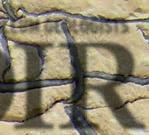
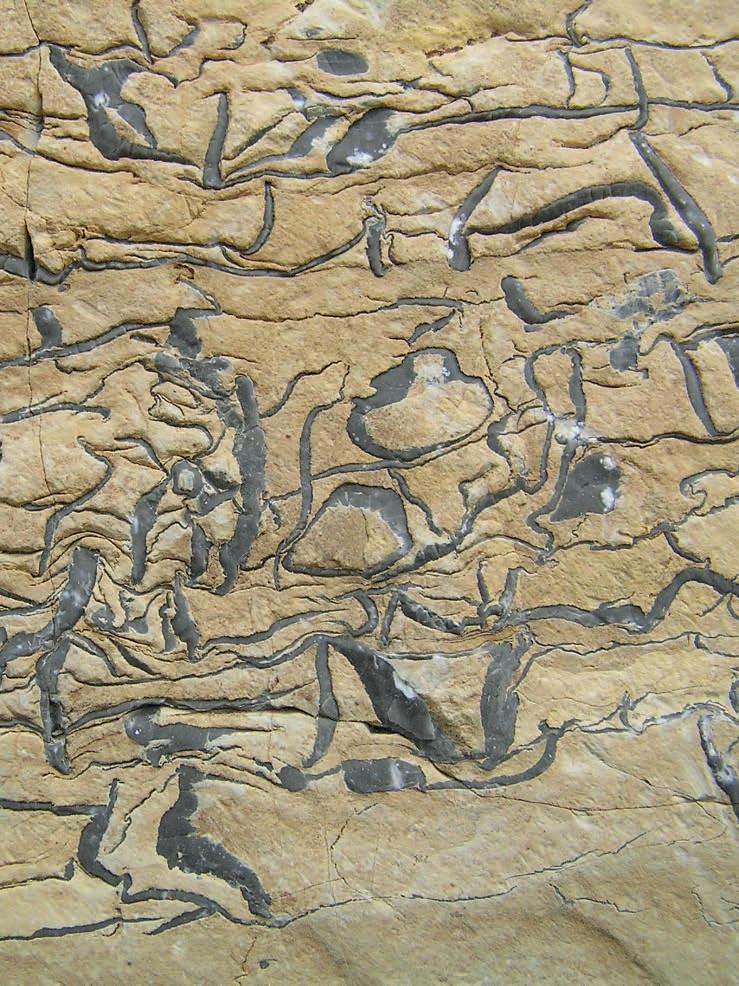
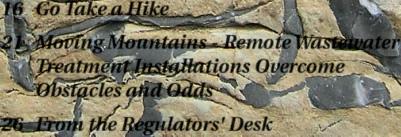







GEOSCIENCE SOFTWARE

MAPPING AND ANALYSIS






INDUSTRY INSIGHT












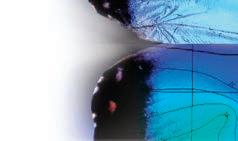





























































IHS is invested in the success of Canada’s energy industry. We maintain an open dialogue with our customers, and as a result we are launching a new IHS AccuMap® map and user interface and have delivered workflow integration between IHS Petra® and IHS Kingdom® We have also provided transparency and quality information, and created solutions for better access to global resources.
Today more than ever, partnering with IHS can make the difference between average performance and operational excellence.
Begin your transformation today. Visit IHS at GeoConvention 2012, booth 522. ihs.com/transform



CSPG OFFICE
#110, 333 – 5th Avenue SW
Calgary, Alberta, Canada T2P 3B6
Tel: 403-264-5610
Web: www.cspg.org
Office hours: Monday to Friday, 8:30am to 4:00pm
Executive Director: Lis Bjeld
Tel: 403-513-1235, Email: lis.bjeld@cspg.org
Member Services:
Tel: 403-264-5610, Email: membership@cspg.org
Communications and Publications: Caitlin Young
Email: caitlin.young@cspg.org, Tel: 403-513-1230
Programs Development: Aileen Lozie
Tel: 403-513-1227, Email: aileen.lozie@cspg.org
Accounting and Office Administration: Kasandra Amaro (Klein)
Tel: 403-513-1233, Email: kasandra.amaro@cspg.org
Corporate Sponsorship: Lis Bjeld
Tel: 403-513-1235, Email: lis.bjeld@cspg.org
EDITORS/AUTHORS
Please submit RESERVOIR articles to the CSPG office. Submission deadline is the 23rd day of the month, two months prior to issue date. (e.g., January 23 for the March issue).
To publish an article, the CSPG requires digital copies of the document. Text should be in Microsoft Word format and illustrations should be in TIFF format at 300 dpi., at final size. For additional information on manuscript preparation, refer to the Guidelines for Authors published in the CSPG Bulletin or contact the editor.
Technical Editors
Ben McKenzie Colin Yeo (Assistant Tech. Editor) Tarheel Exploration EnCana Corporation Tel: 403-277-4496 Tel: 403-645-7724 Email: bjmck@live.com Email: colin.yeo@encana.com
Coordinating Editor
Caitlin Young, Publications Coordinator, CSPG Tel: 403-513-1230, Email: caitlin.young@cspg.org,
ADVERTISING
Advertising inquiries should be directed to Caitlin Young, Tel: 403-513-1230 email: caitlin.young@cspg.org. The deadline to reserve advertising space is the 23rd day of the month, two months prior to issue date.
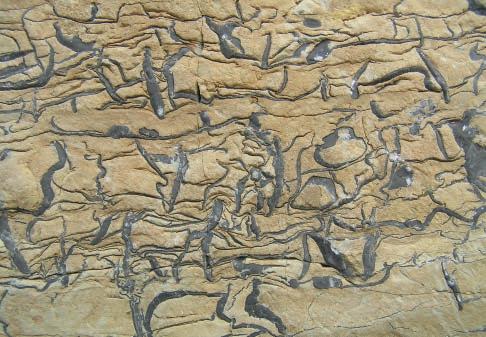
52nd ANNUAL CSPG CLASSIC Elbow Springs Golf Club • June 21-22, 2012
The Tournament would like to thank the following 2011 sponsors:
Diamond Sponsors
geoLOGIC Systems
Schlumberger of Canada
Emerald
Baker Atlas Wireline
Energy Navigator Inc.
Fugro Data Solutions Canada Inc.
GeoStrata Resources Inc.
Halliburton
IHS
AGAT Laboratories
ATB Corporate Financial Services
Athabasca Oil Sands Corp.
Belloy Petroleum Consulting
CB Securities
Demchuk & Day
Arcis Corporation
Canadian Discovery Ltd.
Canadian Society of Petroleum Geologists
ConocoPhillips Canada
Continental Laboratories Ltd.
Geo-Steering Solutions Inc.
Greystone Resources Ltd.
Knowledge Energy Inc.
MD Totco Nov. Wellsite Gas Watch
Silver Sponsors
Fekete Associates
Gabel Energy Inc.
Bronze Sponsors
Candian Stratigraphic Services
Global Energy Services
NAME:
Little Rock Document Services
Macquarie Capital Markets Canada Ltd.
M J Systems
ProGeo Consultants
RBC Dominion Securities
RECON Petrotechnologies Ltd.
Weatherford Canada Partnership
Divestco Inc.
GLJ Petroleum Consultants
LXL Consulting Ltd.
Painted Pony Petroleum Corp.
Ryan Energy Technologies
West Canadian
Pajak Engineering Ltd.
Pason Systems Corp.
Petrocraft Products Ltd.
Rigsat Communications
RPS Energy
Sample Pro Ltd.
Sproule Associates Ltd.
Total Gas Dectection Ltd.
Typhoon Energy Ltd.
Martin Quinn
Seismic Brokerage Services Ltd.
Hydro-Fax Resources Ltd.
San Dago Resources Ltd.
Sponsorship Contact: Richard Chisholm 403-538-8290
Visit us on Facebook or Linkedin: CSPG Classic Golf
The CSPG Classic Golf Tournament has incorporated fundraising for charity as part of the event. In 2012 the charities selected are the Salvation Army Agape Hospice & CSPG Educational Trust Fund
Registration Form
SIGNIFICANT OTHER:
COMPANY:
ADDRESS (Bus.):
POSTAL CODE:
TELEPHONE: CELL PHONE*:
E-Mail*:
*The CSPG Classic respects FOIP. (Privacy Act of Alberta) No contact information is given to third parties.
All contestants are required to have a photo in the Golfer’s Photo Roster. Former contestants who have submitted a photo in the past need not do so again. Handicap: __________ Golf Index: __________ or
Average of best three 18-hole scores in past 2 years:______________
Registration Fee: Includes two rounds of golf with power cart; Paid driving range; Door prize draws; Skill prizes; BBQ (at Elbow Springs) and Awards Banquet (Calgary Petroleum Club) for you and your guest.
Total S
Non-member Member
To assist the Entertainment Committee with budgeting, please indicate if you plan to attend the two major social events of the tournament:
Thursday Barbecue: Yes No Friday Awards Banquet: Self: Yes No Guest: Yes No
Social Events Cancellation or Additions require 72 hours notice before the event. Please contact Bob Earle by phone: (403) 803-3744 or email: cspgclassicgolf@gmail.com
Make Cheques Payable To: CSPG (ClassicGolf)
Send Entries To: CSPG Classic Golf Tournament 110, 333 5th Avenue S.W. Calgary, AB, T2P 3B6
* Please photocopy your entry form and cheque before mailing.
Last day for refund requests: June 5, 2012.














PRESIDENT
Robin Mann • AJM Deloitte rcmann@deloitte.ca Tel: (403) 648-3210
VICE PRESIDENT
Paul MacKay • Shale Petroleum Ltd. Paul.Mackay@shalepetroleum.com Tel: (403) 457-3930
PAST PRESIDENT
Kirk Osadetz • Geological Survey of Canada, Calgary kosadetz@nrcan.gc.ca Tel: (403) 292-7022
FINANCE DIRECTOR
Andrea Hood • geoLOGIC systems ltd. ahood@geologic.com Tel: (403) 262-1992
ASSISTANT FINANCE DIRECTOR
Samantha Etherington • CNRL samantha.etherington@cnrl.com Tel: (403) 386-6459
PROGRAM DIRECTOR
Jon Noad • Murphy Oil Corporation jon_noad@murphyoilcorp.com Tel: (403) 294-8829
ASSISTANT PROGRAM DIRECTOR
Dave Russum • AJM Deloitte drussum@deloitte.ca Tel: (403) 648-3228
SERVICES DIRECTOR
Michelle Hawke • Apache Canada Ltd. Michelle.Hawke@apachecorp.com Tel: (403) 261-1200
ASSISTANT SERVICES DIRECTOR
Mike Seifert • Canadian Discovery mseifert@canadiandiscovery.com Tel: (403) 269-3644
COMMUNICATIONS DIRECTOR
Jim Barclay • ConocoPhillips Canada
Jim.E.Barclay@conocophillips.com Tel: (403) 532-3889
ASSISTANT COMMUNICATIONS DIRECTOR
Curtis Evans • ERCB curtis.evans@ercb.ca Tel: (403) 297-8386
OUTREACH DIRECTOR
Simon Haynes • Statoil Canada Ltd. sihay@statoil.com Tel: (403) 724-0364
ASSISTANT OUTREACH DIRECTOR
Dawn Hodgins • Imperial Oil Resources dawn.hodgins@exxonmobil.com Tel: (403) 232-5931
EXECUTIVE DIRECTOR
Lis Bjeld • CSPG lis.bjeld@cspg.org Tel: (403) 513-1235
A Message from Paul MacKay, Vice President
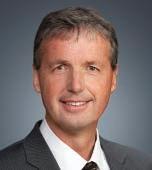
Most of our membership works in what the management gurus call a “Team” environment. We like to be thought of as “Team” players and we discuss “Team” goals. Some of us go as far as putting on the “Team” uniform with a corporate logo, discretely printed so as it can be worn in other public venues. What is interesting is that we are placed in these Teams or Groups, sometimes with a good dose of corporate group therapy, but with little thought about the valuable experience we learned as children when we joined a new group sport or activity.
Children are natural individuals. They frame their world with what is best for them and do not think of the broader benefits of the group. Why is it then that so many of us recall playing a group sport or activity with such nostalgia and fondness? It is in these group settings where we first learned the concept of team, where we learned we could individually succeed by working as a cohesive group. The greatest lesson learned when we first walked on a stage in the school play or laced up running shoes and walked out on the basketball court was to play our position, recite our lines, or sing our part. To vary from this in a group setting created confusion, chaos, and ultimately failure. We learn to do our part only when we learn to trust each other. The tuba player trusts that the piano player will find the melody and the drums will find the beat. Team success hinges on the concept of trust.
Trust has interesting characteristics. Trust requires both trustworthiness and a trusting spirit in equal degrees. If one is trustworthy but not trusting then the relationship with another individual will be flawed and ultimately fail. A marriage where one partner is faithful but has a suspicious attitude toward the other partner is likely going to be in need of some serious counselling. Another interesting quality of trust is that it is not freely given but needs to be earned. An individual will approach a group with caution and the group will deal with the new member with tentative reserve. The sense of freedom and openness that is required in a team environment is
not automatically available. So how is the trusting attitude developed and what does the childhood experience teach us?
The first activity taught in a sport is the art of the pass, the concept that success comes from working together. A new sports team does not engage in competition on its first day but it first practices the concept of team – it builds and practices trust. In the corporate world we may be on a team a very short while before we are in “game situation” (in fact we often join a team during the game). We are expected to do our role, we have a professional obligation and with that comes expectations of performance and attitude but note that these are vastly different from the concepts of trust. Trust is not an instantaneous condition, it requires time and experience. Those of us who have had the positive experience of having been on a trusting team will know that the bonding with a new team becomes easier with every previous successful team experience. How then do we develop these successful experiences? How do we get “Team” practice? Where do we learn how to trust and how does this relate to the CSPG?
The CSPG is an impressive organisation driven forward by the energy and effort of its volunteers derived from its membership. There have been numerous past columns in this space cajoling, urging, admonishing, and encouraging the membership to volunteer. It might be wise to pause and understand why people volunteer. Some chose to serve out of purely altruistic motivation (if only we all could be so noble). Some chose to serve out of a sense of duty or obligation – to put back into the system (if only we could all be so responsible). Some chose to serve for personal gain (if only we could all be so honest). I would suggest that the first two motivations are to be admired but they generally are poor motivators over the long haul. The third motivation may seem crass but is the one that will keep the volunteer engaged through the entire process.
(Continued on page 7...)
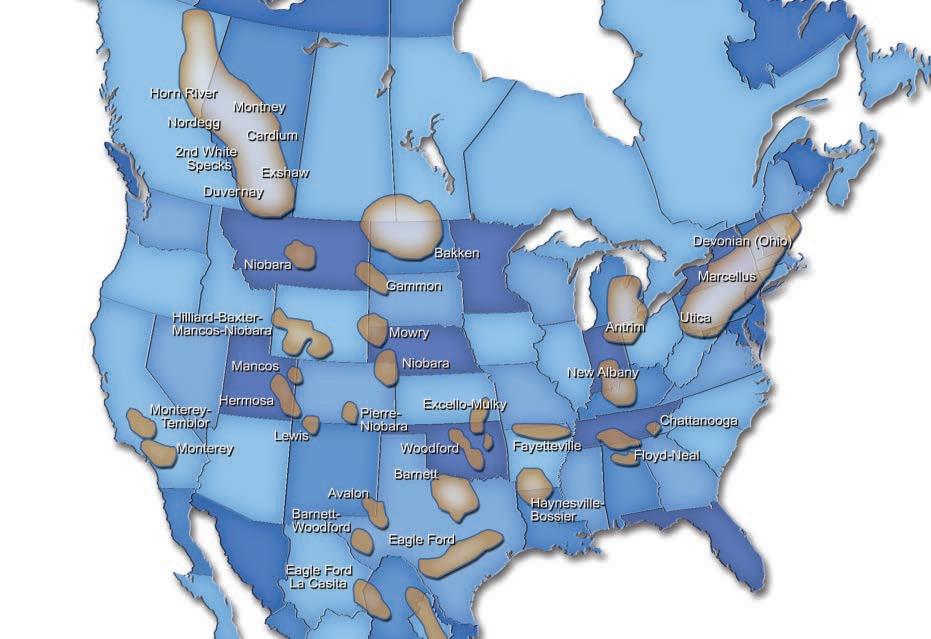
In today’s environment, opportunities are gone as quickly as they appear. Very few organizations have the resources to stay current with developing trends as well as proven reservoirs. Many organizations are forced to make quick decisions about opportunities in reservoirs they may not fully understand.
NuTech Energy Alliance works with clients to shorten learning curves. As a leader in unconventional reservoir characterization, NuTech’s clients make faster decisions resulting in earlier commercial returns. NuTech provides the resources and a database of comparative knowledge to significantly impact our client’s decision-making process.

CORPORATE SPONSORS
DIAMOND
IHS
GEOLOGIC SYSTEMS LTD.
SCHLUMBERGER CANADA LTD.
PLATINUM
CENOVUS
CONOCOPHILLIPS
ENCANA
IMPERIAL OIL
NEXEN INC.
SHELL
TALISMAN ENERGY
POGGENPOHL
GOLD
APEGA
CSPG EDUCATIONAL TRUST FUND
DEVON CANADA
WEATHERFORD LABORATORIES
SILVER
ENERPLUS
JEWELSUITE
ROXAR
TAQA NORTH
BRONZE
ATHABASCA OIL SANDS
BAKER ATLAS WIRELINE
BLUEBACK RESERVOIR
PARADIGM
GEOVARIANCES
CSEG FOUNDATION
HUSKY ENERGY
LITTLE ROCK DOCUMENT SERVICES
LORING TARCORE LABS
MACQUARIE CAPITAL MARKETS
CANADA LIMITED
ROKE TECHNOLOGIES
RPS BOYD PETROSEARCH
HALLIBURTON ENERGY SERVICES
SUNCOR ENERGY
SUNDOG PRINTING
WEATHERFORD CANADA PARTNERSHIP
AS OF MAY 10, 2012
(...Continued from page 5)
Volunteering in the CSPG is one of the best ways to learn how to develop trust. By joining one of the many volunteer groups in the Society, the individual will engage in a process that will improve their ability to interact in a team environment. Most of the CSPG executive have benefited from a long experience in the Society. As a result they have enjoyed new successes, have been exposed to greater opportunity, and reap superior understanding from other aspects of their professional lives. Successful volunteers receive more than they put into the process. Essentially the CSPG acts like a large lucrative experience bank, where modest initial investment compounds quickly and reaps great rewards over a prolonged period.
At a recent job fair for university geosciences students put on by APEGA, the main question put forward by the students was, “How do I find the job that will help define my career?” The response to this question was remarkably consistent amongst the entire panel. To advance your career and to find the right job the best thing one can do is to network and get to know people. Networking is more than simply meeting a large number of people and remembering names. Networking is about making connections and developing trust. It is about finding people whose interests and direction will mesh with your objectives. Note that networking is essentially a means of finding synergy with others.
In any given month there are approximately eight to ten CSPG activities in which a member can participate. Many of these activities are free and offer a tangible chance to learn new techniques, be exposed to new concepts, and gain new experiences. At the end of most of these activities there is a chance to catch up with former colleagues, meet new people, and exchange greetings with old friends. Each of
these activities is a networking opportunity. If there is perceived value in the networking aspects of the Society then it is important to know that the networking at the volunteer level has a higher level of effectiveness. Think of volunteering as networking on steroids.
Volunteering in the CSPG is one of the most proactive efforts one can make to advance a career. It will have the effect of expanding a circle of reliable contacts at an accelerated pace. It will open paths that have long been sought but also many new ventures that had never been imagined. For younger members it is a chance to work with more experienced colleagues who have weathered numerous cycles within the industry. For more senior members it is a chance to work with the enthusiasm and energy of youth. It is social, technical, challenging, and fun. It is my sincere belief that the best thing one can do for their career is to volunteer in some capacity in the CSPG. It is the advice I give to students and it is the same advice I give to retirees. It is a consistent concept throughout a career because it works.
Martin Teitz is the CSPG volunteer coordinator. He knows of an exceptional opportunity to integrate any member into the broader world of a volunteer. If time is limited and you have a very narrow scope of the type of volunteer you would like to be, Martin can help you. If you are ready to take on the world Martin can help you. If you want to develop new skills in management, organization, and leadership – Martin can help you. Do you want to work with schools, talk to university students, engage in publications, lead field trips, organize divisions, reach out to sponsors, or any number of different aspects? Entry into the volunteer world of the CSPG comes with amazing benefits that will continue to flourish throughout a career. Email membership@cspg.org to volunteer.




Central conjugate margin petroleum systems of the Scotian Shelf and Slope, offshore Nova Scotia –evaluation of the future oil versus gas prospects and its significance to East Coast energy strategy beyond 2012
SPEAKER
Mukhopadhyay (Muki), Prasanta K., Global Geoenergy Research Ltd.
11:30 am
Tuesday, June 5, 2012
Calgary TELUS Convention Centre Calgary, Alberta
Please note: The cut-off date for ticket sales is 1:00 pm, Tuesday, May 29, 2012.
CSPG Member Ticket Price: $42.00 + GST. Non-Member Ticket Price: $45.00 + GST.
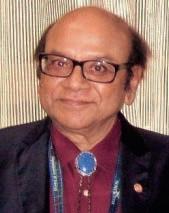
Each CSPG Technical Luncheon is 1 APEGA PDH credit. Tickets may be purchased online at www. cspg.org.
The Scotian Basin is considered to be one of the major petroleum provinces in the Central Atlantic Conjugate Margin and bears a resemblance to the late Triassic-Recent sediments from offshore Morocco (other side of the Atlantic Margin) in relation to geological framework, play types, and salt mobilization histories. Subbasins Abenaki, Sable, Shelburne, and Laurentian have distinct variability in the geological framework, salt dynamics, source rock potential, and hydrocarbon migration patterns. Although 23 significant hydrocarbon discoveries have been reported from Jurassic, Cretaceous, and Tertiary reservoirs within the Scotian Shelf, our geochemistry and modeling data suggests that future discoveries may exist within the Jurassic section of the shelf. In the Scotian Shelf, three petroleum systems and four hydrocarbon families (light oil, condensate, and gas) were genetically correlated with


petrographical & sedimentological descriptions for samples (thin section - fluid inclusion studies) conventional vertical/horizontal wells operations geology
our best friend and most
www.geok2.com -
Webcasts sponsored by
the early Jurassic lacustrine (Cohasset oil), late Jurassic mixed marine/terrestrial Verrill Canyon (Kimmeridgian-Tithonian; Venture Gas), and the marine Tertiary Banquereau formations (Primrose oil).
Unlike the Scotian Shelf, only 25 m of overpressured reservoir sand (early Cretaceous gas/condensate) have been discovered in the Jurassic-Tertiary sediments within the Scotian Slope. The lack of hydrocarbon discoveries in the slope is closely related to five critical parameters that h ave in fluenced the variability of the petroleum systems in each basin: (a) heat flow in relation to allochthonous and autochthonous salt mobilization and basement fractures; (b) direction of turbidite channel-forming sand mobilization and the bypassing of sands in relation to salt mobilization; (c) deepwater source-rock anoxicity in relation to the organic facies and the kinetics of the hydrocarbon charge factor; (d) the timing of the hydrocarbon flow movement in relation to the timing of the hydrocarbon trap; and (e) the survival of hydrocarbons and seal-rock stability in relation to the upper Tertiary sediment section and listric growth faults.
The Petroleum System Risk Assessment (PSRA) within the Deepwater Scotian Slope sediments of Eastern Canada has predicted the presence of four viable petroleum systems within the mid-Jurassic to Tertiary sediments. Based on the variability of the heat flow regime in various parts of the Scotian Margin, gas and condensate that are genetically connected to two late
(Continued on page 10...)

-
partner is
client
C. Dragomir
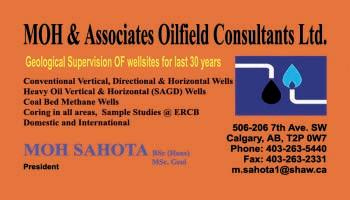

Courses include:
• Getting Started in Fluvial Stratigraphy
• Fundamentals of Siliciclastic Sequence Stratigraphy
• Rocks, Pores & Capillary Pressure: Understanding Reservoirs & Seals
• Quantification of Geologic Risk
• Geological Interpretation of Seismic Data
• Risk Reduction for Plays & Prospects Using Quantitative Show
• Reservoir Engineering for Petroleum Geologists
• Image Log Interpretation
• Formation Evaluation of Thinly-Bedded Reservoirs
• Exploring for Stratigraphic Traps Using Multi-well Pressure/Depth Plots
• Regional Stress and Reservoir Geomechanics
• 4D Evolution of Contractional Terranes
• Hydraulic Fracturing for Geologists
Hosted by the Norris Conference Center:
304 Houston St. Ft. Worth, TX 76102
Phone: 817-289-2400
Fax: 817-289-2411
Special AAPG group rates at nearby hotels.
Registration and information:
Toll-free (U.S. and Canada) 888-338-3387, or 918-560-2650
Fax: 918-560-2678
E-mail: educate@aapg.org
Download a registration form at: www.aapg.org/education/sec.cfm
Jurassic to early Cretaceous Verrill Canyon marine source rocks would be the most likely hydrocarbons within the subsalt turbidite fans and salt-related reservoirs in the various minibasins. Late Triassic to early Jurassic lacustrine source rock might be able to produce Cohasset-type 40° to 55° API light oil within the Tertiary turbidite fan reservoirs of the eastern Shelburne Subbasin. However, our PSRA research clearly demonstrates that early Jurassic-sourced lacustrine oil would be volumetrically insignificant within the total hydrocarbon volume of the Scotian Slope.
Prasanta K. Mukhopadhyay, known as Muki, has 28 years of research experience in petroleum exploration including the application of petroleum systems analysis (geological evaluation, petroleum geochemistry/organic petrology, and numerical modelling) in basin evaluation and risk appraisal of both conventional and unconventional petroleum prospects. He has a Ph.D. in Coal Geology/Maturation from Jadavpur University, Calcutta, India and has completed two years of Post-Doctoral Research as Humboldt Fellow in Petroleum Geochemistry (RWTH, Aachen, Germany). He has published 65 articles related to petroleum exploration,

CBM and CO2 sequestration, chapters in various books (AAPG, etc.), and edited four books for Elsevier and American Chemical Society. He has presented numerous (more than 300) oral and poster presentations at various scientific society meetings and conducted many short and webinar courses for various oil companies and professional organizations in Brazil, Canada, China, Japan, Venezuela, and USA (AAPG and various universities) on petroleum geochemistry and petroleum systems modelling.
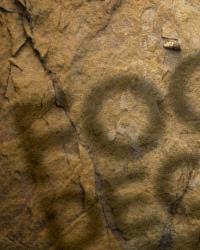


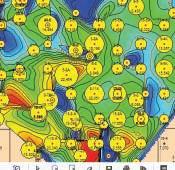


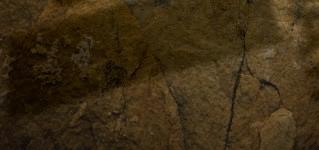

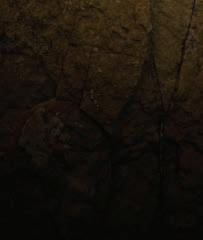

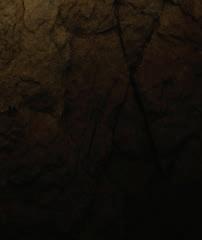

He has organized special sessions for AAPG (2000-2010), the American Chemical Society (1993-1995), TSOP, NASA Astrobiology Group for the SPIE and other societies (2009, 2010, and 2011) on deepwater exploration, CBM, shale gas, and solar system hydrocarbons. Muki worked as a geochemist, research scientist or associate, and advisor in geochemistry/modeling for Oil and Natural Gas Commission (Dehra Dun, India), Institute for Petroleum Geochemistry and Petroleum (ICH-5, Juelich, Germany), Texas Bureau of Economic Geology (Austin, Texas), Geofuel Research Institute (Sydney, Nova Scotia), and Murphy Oil USA (Houston, Texas).
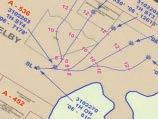

Dr. Muki is currently the President of Global Geoenergy Research Limited, Halifax, Nova Scotia, Canada and an Adjunct Professor at the Earth Sciences Department, Dalhousie University, Halifax, Nova Scotia. He is actively involved in multi-phase research in conventional and unconventional petroleum systems exploration. He is an active member of AAPG, CSPG, TSOP, and the Member Society Council of AGI. He was involved with the AAPG Research Committee (2000-2005) and has been Associate Editor of the AAPG Bulletin since 2002. He has received several best-paper awards on petroleum geochemistry and coalbed methane. He received various honours from different scientific societies and from the Province of Nova Scotia: (a) 2011: Lifetime Achievement Award (Honorary Membership Award) from the Society for Organic Petrology, Washington D.C; (b) 2011 and 1998: Ambassador of Nova Scotia Award from the Nova Scotia Dept. of Economic Development and World Trade and Convention Centre, Halifax, Nova Scotia, respectively; (c) 1998: Citation (Honor of Achievement) from the Premier of Nova Scotia for the scientific achievements and dedications made to the promotion of the Petroleum and Coal Industries of Nova Scotia, Canada; (d) elected as President of The Society for Organic Petrology, Washington, DC and served during 2000-2001; and (e) the General Conference Chairman for the Society for Organic Petrology in 2011 and 1998.
He was also the organic geochemist onboard the Global Challenger in Leg 87 (Nankai Trough, Japan) with Gas Hydrate Discovery and Leg 107 in Tyrrhenian Sea and worked on
SPEAKER
Nabil Al Adani
Suncor Energy
12:00 Noon
Thursday, June 21, 2012
Suncor Energy Centre
150-6th Avenue SW 17th Floor West Tower Room A and B
Calgary, Alberta
Understanding and modeling petrophysical properties are the key factors in
establishing a reliable predictive simulation model. The basic fundamentals of the petrophysics are challenged with inclusion of unconventional reservoirs, like bituminous sand or shale gas. In this case the fundamentals shall be revisited and modelled. The modeling still will remain fit to purpose as no model can accommodate all known complications and factors where there are still unknowns in the system.
In this presentation, I will be reviewing data from the McMurray Formation acquired in the Firebag, MacKay River, Meadow Creek, Lewis, Foster Creek, and Christina Lake areas. Porous media fundamentals, as well as new findings in terms of wettability and capillary trapping will be discussed. The supplied core analyses will be screened and challenged. The log data correlations with core analyses will be demonstrated. The objective is to show the upscaling aspect and minimum possible deliverables.
Sponsored by
I will be building models for permeabilities and critical saturations simulation purposes. I will be proposing economical characterization techniques to build a simulation model.
Refreshments sponsored by:


SPEAKER
Mehran M. Hassanpour Enerplus Corporation
12:00 Noon
Wednesday, June 27, 2012
Husky Conference Room A +30 Level South Tower 707 8th Ave. SW
Calgary, Alberta
The McMurray Formation contains multiscale complex geological features that were partially formed in a fluvial-estuarine depositional environment. The inclined heterolithic strata deposited as part of tidal channels contain continuous centimeterscale features that are important for flow characterization of SAGD processes. These tidal channels are common, extensive, and imbricated over many square kilometers. Modeling the detailed facies in such estuarine systems requires a methodology that reflects this heterogeneity.
Conventional facies-modeling approaches such as the widely used sequential indicator
simulation (SIS) are generally unable to capture the geometry of geological features. Object-based modeling is well established and preferred to the conventional pixelbased techniques when there is a good knowledge of representative geo-objects in the geological system and sparse conditioning. The geomodels generated with object-based modeling can reproduce complex geological features, are more visually attractive, and can perform better when used in complex transfer functions such as flow simulation. In most of the object-based modeling techniques the geoobjects are represented as a template of cells that are coded as a particular facies inside the objects or as geometries that are immediately rasterized to a grid. This can lead to a lack of small-scale geological feature reproduction when the features are smaller than the resolution of the grid.
The grid-free facies modeling technique is developed to capture complex geometry of the most important facies association in the McMurray Formation (the IHS facies). The grid-free framework allows for a representation of geological objects as surfaces and parametric shapes that are not linked to any particular Cartesian grid system. Features millimeters thick or kilometers in extent are represented very efficiently in the same model. Geological sequences are entirely represented by mathematical functions. This allows for the complete preservation of architectural information for consistent application to any gridding scheme, local grid refinements,
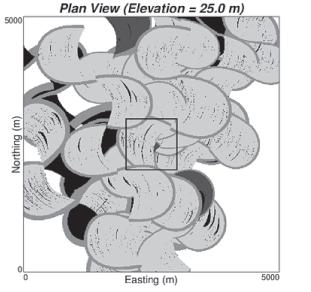
Sponsored by
down-scaling, up-scaling, drape surface, locally variable azimuths and property trend modeling, and flexible model interaction and manipulation.
This methodology is amenable to modeling the complicated architecture present in the McMurray Formation (northern Alberta Canada oil sands). This work provides an illustration of the grid-free facies modeling technique applied to the real McMurray Formation data. A data set from the McMurray Formation is assembled and a full geostatistical modeling is performed. Both the grid-free and a conventional facies modeling technique (SIS) are applied and the final results are compared.
Mehran Hassanpour is a reservoir geomodeler at Enerplus Corporation and a Ph.D. candidate in Geostatistics at the University of Alberta. He holds a B.Sc. degree in Reservoir Engineering from Petroleum University of Technology in Iran and a M.Sc. degree in Geostatistics from University of Alberta. His area of interest includes geostatistical reservoir characterization and numerical modeling of oil and gas reservoirs.
There is no charge for the division talk and we welcome non-members of the CSPG. Please bring your lunch. For details or to present a talk in the future, please contact Weishan Ren at (403) 724-0325, e-mail: wren@statoil.com.

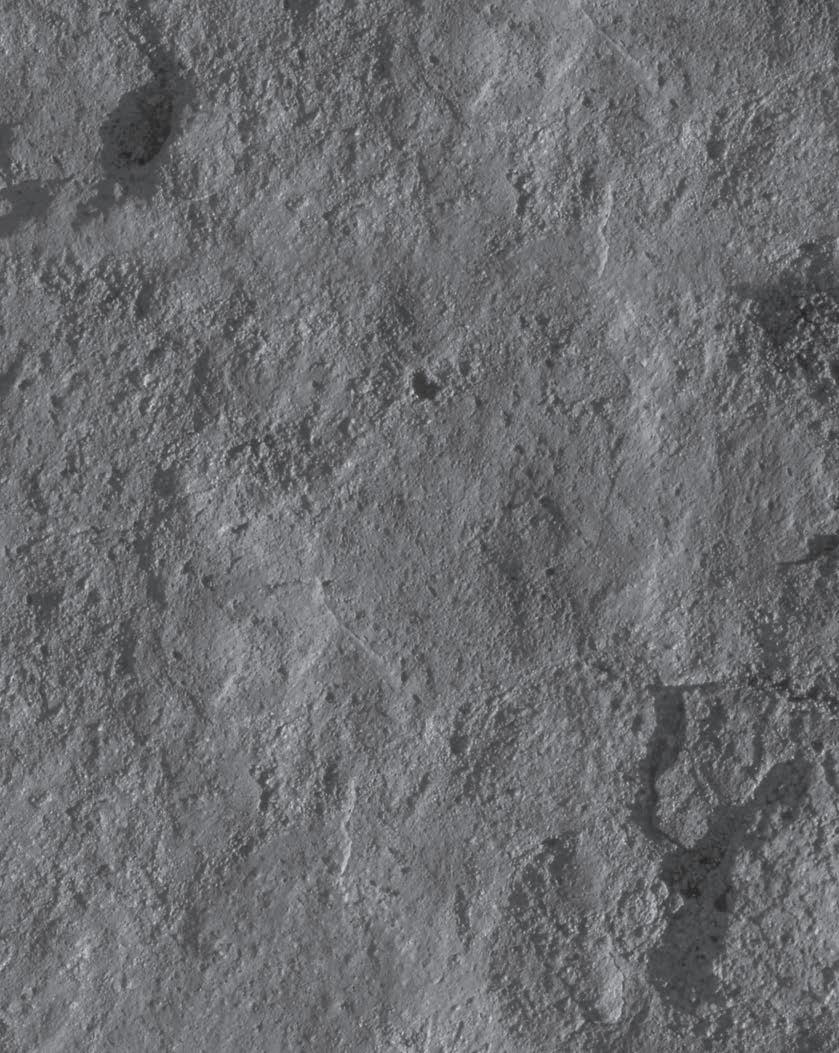

afran@telusplanet.net www.serpaconsulting.com
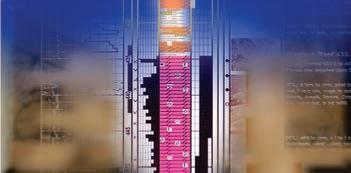








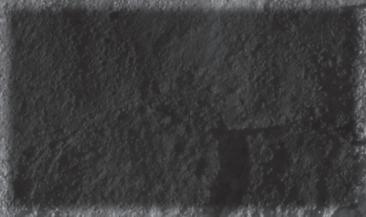
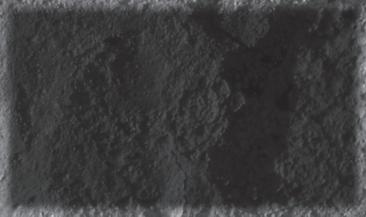
This past year the Graduate Student Thesis Awards Committee was treated to some very well written theses on a variety of interesting topics. Winners were selected in both categories as well as an honorable mention in the M.Sc. category. These winners join a long list of past winners, which can be found on the CSPG website at www.cspg.org.
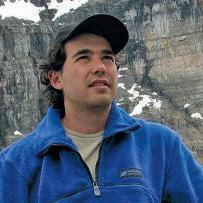
The winner of the Ph.D. award is Patricio Desjardins (University of Saskatchewan, Profs. Luis Buatois, Gabriela Mangano, and Brian Pratt, co-supervisors) for his thesis entitled “Sedimentology, Ichnology and Sequence Stratigraphy of the Lower Cambrian Gog Group, southern Rocky Mountains, Canada.” Dr. Desjardins’ study is focused in the Bow Valley Area from Mount Assiniboine to Mount Chephren, an area in the Rockies noted for spectacular mountain scenery. The Gog Group has been recognized and described by field geologists since the 19th century but because the majority of its exposure is in the cliff faces of the mountains, it has never been described in detail due to the challenges in finding accessible outcrops. Dr. Desjardins undertook this challenge and measured 20 sections, several in widely visited areas of Banff National Park. The thesis is organized into four separate papers analyzing different aspects of the Gog Group. Objectives of the study include: a) revising the existing stratigraphy, b) documenting the sedimentary facies and facies assemblages in order to interpret sedimentary processes and environments, c) analyzing the sandstone body geometries, d) developing a sequence stratigraphic framework, and e) documenting trace fossil occurrences and characterizing them in terms of colonization trends and paleoenvironmental conditions.
The depositional environment of the Gog Group is interpreted to be high energy subtidal. Sandstone geometry is characterized by compound dune fields, sand sheets, sand ridges, and patchy dunes. The author notes that trace fossil distribution is mostly controlled by the interplay of substrate mobility, grain size, oceanic productivity, organic matter distribution, and salinity.
Dr. Desjardins’ thesis is well written and beautifully illustrated. CSPG members studying subtidal sand-body geometry and trace-fossil occurrences in high-energy tidedominated environments are encouraged to review this thesis or the published papers from the thesis.
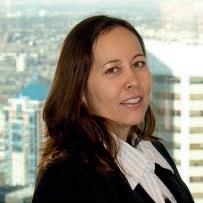
The winner of the M.Sc. award is Mary L. Borrero (University of Alberta, Prof. Hans Machel, supervisor) for her thesis “Hondo Evaporites within the Grosmont Heavy Oil Carbonate Platform, Alberta, Canada.” Her thesis is a well written, detailed study of the development and evolution of the Hondo evaporites and their importance in the Grosmont heavy oil province of northeastern Alberta. Mary’s thesis work focused on the Grosmont shelf complex of north-central Alberta, the world’s largest carbonate-hosted heavy-oil deposit with an estimated 318 to 406 billion barrels of oil in place. The study concentrated on an enigmatic sub-unit, the Hondo Evaporite: its depositional history, regional distribution, seal potential, and role in the diagenetic evolution of the Grosmont Formation. Evaluation of the Hondo involved log interpretation, core examination of 32 wells, cuttings evaluation of 105 wells, facies descriptions, and stable-isotope analysis.
This thesis represents a comprehensive
rock-based study applied to a complex sedimentological, stratigraphic, and diagenetic problem. Mary’s thesis provides new insights into the depositional environment and distribution of the Hondo, and constitutes a significant contribution to our understanding of the geometry and oil-trapping characteristics of the Grosmont Formation. Given the growing interest in the bitumen reserves within this complex carbonate reservoir, this study is a valuable read for anyone working on the Grosmont Complex or on evaporite deposits in the Western Canada Sedimentary Basin.
An honorable mention was given in the M.Sc. category to Phillip A. Labrecque (University of Calgary, Profs. Steve Hubbard and Jerry Jensen, co-supervisors) for his thesis entitled “Stratigraphic architecture and cyclic sedimentary record in Point Bar Deposits: Implications for reservoir characterization and heterogeneity prediction, Cretaceous McMurray Formation, Alberta.” Members of the CSPG community, especially those involved in recovering oil and gas from ancient point bar deposits, and those working with SAGD recovery from the Athabasca oil sands, should find Mr. Labrecque’s thesis an interesting read. His detailed evaluation provides a valuable ancient analogue to understand dimensions, facies distributions, and cyclicity in ancient point-bar deposits.
Mr. Labrecque used a dense industry data set comprised of multiple well logs and 3D seismic data to focus on the building blocks of a large, ancient point bar in the McMurray Formation in the Athabasca oil sands region. Using this detailed data set, the resulting study sheds light on the distribution of facies across a large ancient point bar.
The first section of the thesis is comprised of a suite of detailed metrics for the ancient point bar, followed by facies descriptions and comments on stratigraphic architecture. The author then describes and applies a mapping technique that contours average gamma ray values applied in 3m increments from a stratigraphic datum. These maps illustrate facies distributions along and across the ancient bar, and highlight downstream fining trends.
The second part of the thesis applies very different techniques to the same data set to address the presence of cyclicity in point bar deposits. While not ascertaining the
exact cause of cyclic sedimentary patterns in this ancient bar, the author focuses on the potential production issues associated with high degrees of sedimentological cyclicity. The first methodology applied was a suite of autocorrelations applied to gamma ray logs to highlight periodicity of different wavelengths. Following this, Fourier transforms were applied to identify wavelength and magnitude of cyclicity at varying depths, and the resulting interpretations are presented in map view. In sandier upstream parts of the point bar, cyclicity has shorter wavelengths and it is implied that siltstone beds will have a lower impact on production using the SAGD recovery process. The author goes on to suggest that SAGD development wells avoid areas where longer cycle wavelengths are present.
Many thanks are extended to all the members of the committee for taking time out of their very busy schedules to evaluate this year’s theses. The committee members are Chuck Buckley, Andre Chow, Tim de Freitas, Tony Habib, Tony Hamblin, Sid Leggett, Cindy Robinson, Terry Sami, Anne Sherman, Martin Teitz, Michael Webb, and Andrew Willis. Due to work commitments Richard Evoy who has been on the committee for the last few years was unable to participate this year. The committee welcomed Chuck and Tony Habib as new members of the committee this year. Their input has already proved to be valuable to the committee. Also thanks are extended to Pengrowth Energy Corporation for their support.
The committee is always looking for members interested in reading and judging theses. Participation provides members with an opportunity to keep up to date with current university research. If you are interested in serving on next year’s committee, please contact Andre Chow or any of the other committee members for additional details.

The Techlog* wellbore software platform enables you to capitalize on your data investment—improving planning and formation evaluation— in every well. The new acoustics and geomechanics, and enhanced mineral solver capabilities provide powerful additional science, while the redesigned and highly customizable interface promotes knowledge sharing and increases productivity.
Techlog software delivers optimal data integration for better decisions—from exploration to production.
For details call (403) 294 4300 www.slb.com/techlogpetrophysics
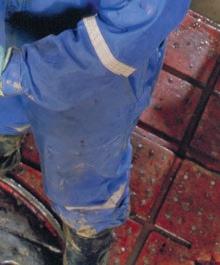

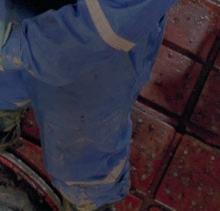



| By Christopher Collom and Joey O'Brien
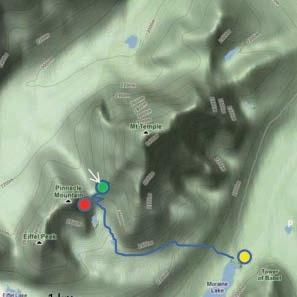

STRATIGRAPHY
CF: Cathedral Formation
MW: Mt Whyte Formation
PF: Peyto Formation
WP: Wiwaxy Peaks

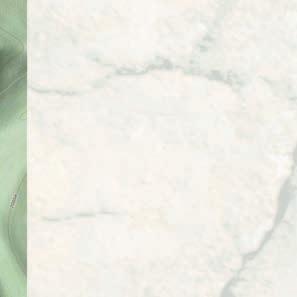
Trailhead: Exit off Hwy 1 at Lake Louise, then follow the paved road up to Moraine Lake Parking Lot; follow the lakeshore, right, to the trail marker sign.
Distance: ~12 km loop. For those brave enough, you can take a dip in the lake afterward. During autumn the larch change colour to breath-taking gold and yellow; not to be missed.
Elevation Gain: ~700 m from Moraine Lake to saddle of Sentinel Pass.
Few places in North America have as much Cambrian strata exposed in scenery as spectacular as you’ll find in this single valley in Banff Park. Hidden within the thick sequences of clastic and carbonate sedimentary rocks are horizons containing true geological treasures. This article addresses one of the great trace fossil locations in the alpine of Western Canada – relatively easy to get to with a sturdy pair of hiking shoes and good weather (optional!). Known for its well preserved ichnofossils, the upper Gog sandstones at and just above the saddle of Sentinel Pass reveal exceptionally well preserved fossil anemone resting traces. Named Bergaueria, these sediment-filled, round convex features represent where a soft-bodied tentacled anemone sat on the sandy bottom of a tidal-influenced nearshore marine setting some 525 million years ago. They can occur in colonies consisting of >50 individuals, and are of many sizes – indicating that specimens were both established adults (larger ones) and juveniles living – and dying – in the same locations together.



Reference: Arai, M.N. and McGugan, A. 1968. A problematical coelenterate (?) from the Lower Cambrian, near Moraine Lake, Banff area, Alberta. Journal of Paleontology, 42(1), p. 205-209. (Terrain map from http://maps.google.com)
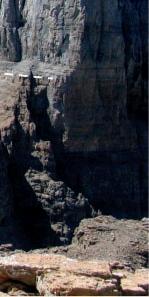
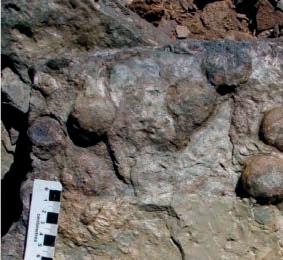
The Reservoir Committee welcomes contributions from our readership to this series. If you wish to offer a submission to Go Take a Hike on your favourite hike of geological interest, email the Reservoir at caitlin.young@cspg.org for more information.
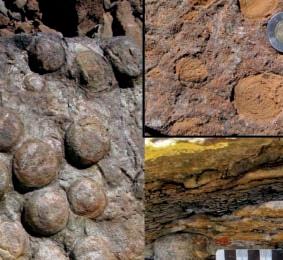

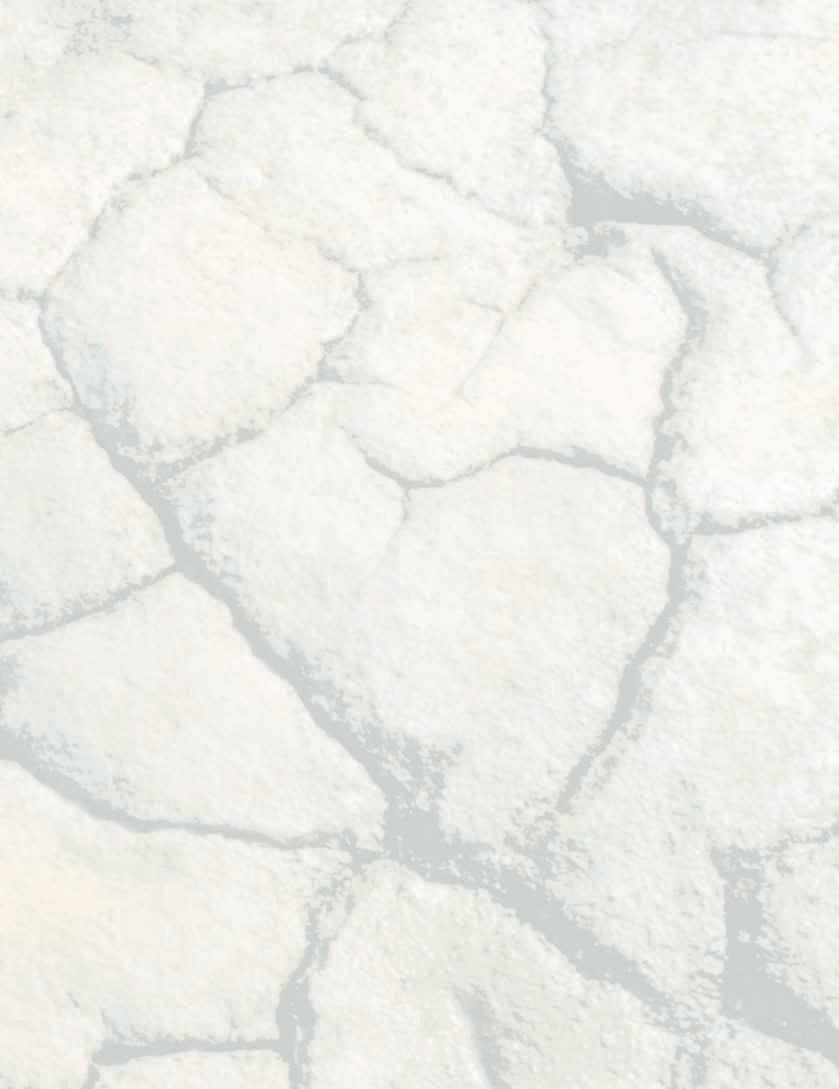
carbonate

Nearly two dozen Bergaueria traces on one of several large scree slabs that can be seen when hiking up from the Pass. Note scale card on left.
Outcrop of Wiwaxy Peaks Mbr. with several ichnofossil-rich bedding surfaces; note high-angle cross-bedding in top sandstone.

Circa 1968 photo of the horizon collected by Arai and McGugan (see ref.) at the saddle of Sentinel Pass. This is >25 m lower than the outcrop visited by the authors (at right) although the rock type is similar.
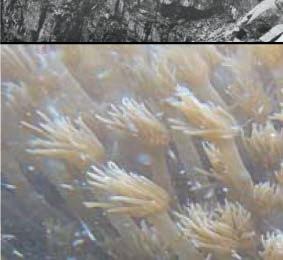

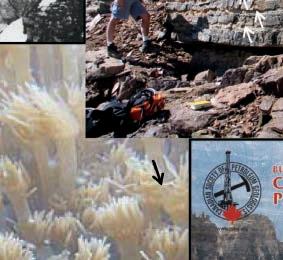

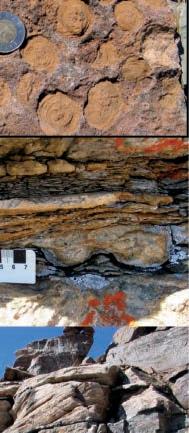
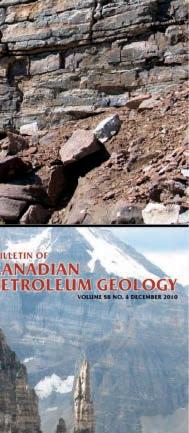

Few organisms inhabited the high sedimentation rate and high energy settings of the Gog Group; worms, rare trilobites, arthropods, and stationary filter feeders such as these anemones being the most common. The facies sequence containing the Bergaueria resting traces have alternating sandstone and mudstone beds and suggest that muddier bottoms were favoured by these invertebrates. The rapid fill of the remnant traces with sand might be evidence of mortality events during storms or mass flows of sandy plumes. – image from http://wildshores.blogspot.com


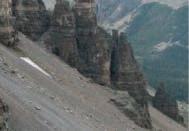
www.cspg.org
FRIDAY, AUGUST 24, 2012 - LYNX RIDGE GOLF CLUB
Format: Modified Texas Scramble , shotgun start at 8:00 am. Teams will be assigned according to handicap or average score This is a fun tournament open to both men and women Registration includes a Continental Breakfast, Dinner, Green Fees, and Power Car ts.
Registration Deadline August 3, 2012 (Priority will be given to CSPG Members).
CSPG - Member # Non-member
Name:
Company:
Address:
Phone (daytime):
Email:
Male Female
Phone / Cell (evening):
Club Handicap or average 18 hole score:
Guest Name: (One guest allowed per CSPG Member)
Male Female
Club Handicap or average 18 hole score:
Please note: A wiver must be signed by EACH par ticipant five business days prior to the Mixed Golf Tournament A waiver form you once your registration form has been processed If a waiver is not signed prior to the tournament, your registration will be removed from the tournament All registrations must be accompanied by full payment All cancellations or registrations must be received in writing via email to David Middleton at dmiddleton@suncor.com. Phone requests will not be accepted. The cancellation or must be received by 4:00 pm on August 12, 2012. A 15% fee will apply.
will be distributed to amendments to amendment cancellation andadministration wa
For more information, contact Brenda Pearson at 403-206-3339 or David Middleton at 403-296-8844
$ 90.00 Member $ 130.00 Non-member / Guest ying guests Maximum 10 spots; first-come , first served.)
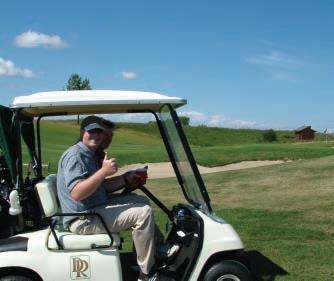
GST # 118836295)
Expiry:
Signature:
Canadian Society of Petroleum Geologists
Attn: Mixed Golf Tournament 110, 333 – 5 Avenue SW Calgary, Alberta T2P 3B6
Phone: 403.264.5610 Fax: 403.264.5898
Photos are taken during the tournament and are sometimes used for promotional purposes in CSPG publications. Your consent is assumed where you are identi able in the picture. Please contact our o ce if you do not consent to your photo being used for CSPG promotional purposes.
A very mild winter has left the golf courses in great shape, and the organizers of the 23rd CSPG mixed golf are busy putting together another great social sports event for CSPG members on Friday, August 24. We look forward to seeing all of our colleagues from previous years, and welcoming new members as we prepare for another great tournament.
The tournament is a mixed four-person best-ball Texas-scramble format, so golfers of all levels can participate and contribute to the teams success. Entry fees remain the same as previous years, with members paying $90 for the event.
A plethora of prizes are available for both skilled and non-skilled events, so while you may covet the long-drive prize, sadly it may be your entry in the “ball-in-water” that earns you a prize!
Registration for the tournament begins at 06:30 on the 24th, and a continental
breakfast will be provided by our sponsors. You will have a chance to purchase mulligans (limit two per person, which gives you an opportunity to dig your team out of bogey territory and back in the running for low team score), and 50/50 tickets to support the CSPG Outreach educational events.
All golfers will be on their carts and ready to head out to their starting holes at 07:45, and at the sound of the shotgun (actually a horn now, so much for firearms on the golf course), tournament play begins. Under the advice of your team captain and with the jovial support of your team, the competition begins, and everyone ends up a winner, enjoying the fun and good times, while getting to know your industry colleagues, suppliers, and contractors better.
Once again we will be hosted by the Lynx Ridge golf course, and enjoy the hospitality of the staff during our event and t he fantastic course layout. The tournament usually finishes at 1:00 pm with scorecards
turned in at the pro-shop, and an excellent steak banquet lunch follows with prizes and awarding of the coveted trophies for team low-net and team low-gross, and the lessdesired trophy for the high-gross score.
We attempt to mix and match the players on teams to give everyone a chance to meet someone new, and make certain that fun is had by all participants. If you are interested in playing, sign up before our registration date of August 3rd. Registration will be available on the CSPG website, on the CSPG mixed golf site, and hardcopy registrations can be mailed or dropped off at the CSPG office. If you have any questions, please contact either David Middleton at 403-2968844 (dmiddleton@suncor.com) or Brenda Pearson at bpearson@birchcliffenergy.com. If you are interested in sponsoring the event, contact Darin Brazel at darin.brazel@ihs. com. The registration form is also available in this issue of the Reservoir.
Detailed and accurate geology at your fingertips in Petra, GeoGraphix, ArcGIS, AccuMap, GeoScout and other applications for information contact: Joel Harding at 403 870 8122 email joelharding@geoedges.com www.geoedges.com
Western Canada: Slave Point, Swan Hills, Leduc, Grosmont, Jean Marie, Horn River Shales, Elkton, Shunda, Pekisko, Banff, Mississippian subcrops and anhydrite barriers in SE Sask., Bakken, Three Forks, Montney, Halfway, Charlie Lake, Rock Creek, Shaunavon, BQ/Gething, Bluesky, Glauconitic, Lloyd, Sparky, Colony, Viking, Cardium, Horseshoe Canyon and Mannville CBM, Oilsands Areas, Outcrops
US Rockies & Williston: Red River, Mississippian subcrops & anhydrite barriers (Bluell, Sherwood, Rival, etc), Bakken, Three Forks, Cutbank, Sunburst, Tyler, Heath, Muddy, Dakota, Sussex, Shannon, Parkman, Almond, Lewis, Frontier, Niobrara, Mesaverde shorelines, Minnelusa, Gothic, Hovenweep, Ismay, Desert Creek, Field Outlines, Outcrops
North American Shales: Shale plays characterized by O&G fields, formation limit, outcrop, subcrop, structure, isopach, maturity, stratigraphic cross-sections. Includes: Marcellus, Rhinestreet, Huron, New Albany, Antrim, Utica-Collingwood, Barnett, Eagleford, Niobrara, Gothic, Hovenweep, Mowry, Bakken, Three Forks, Monterey, Montney, Horn River, Colorado
Appalachian Basin: PreCambrian, Trenton, Utica-Collingwood, Medina-Clinton, Tuscarora, Marcellus, Onondaga Structure, Geneseo, Huron, Antrim, New Albny, Rhinestreet, Sonyea, Cleveland, Venango, Bradford, Elk, Berea, Weir, Big Injun, Formation limits, Outcrops, Allegheny Thrust, Cincinatti Arch, Field outlines
Deliverables include:
Shales Geological Edge Set
-Shapefiles and AccuMap map features -hard copy maps, manual, pdf cross-sections -Petra Thematic Map projects, GeoGraphix projects, ArcView map and layers files -bi-annual updates and additions to mapping -technical support
November 12 - 16, 2012
Calgary, Alberta
ACQUISITION
1 3D Seismic Data Acquisition: An Update on Modern Technologies and Usage Methodologies
Malcolm Lansley November 15 - 16
2 Planning Land 3D Seismic Surveys
Andreas Cordsen November 13 - 14
PROCESSING
3 ABC's of Seismic Data Regularization
Mauricio Sacchi November 12
4 Velocity Model Building Ian Jones November 13 - 14
ROCK PROPERTIES
5 Rock Physics for Geophysical Reservoir Characterization and Recovery Monitoring Gary Mavko November 12 - 13
6 Geophysical Petrophysics Winston Karel November 14 - 15
7 Exploration Rock Physics and Seismic Reservoir Prediction
Per Avseth / Tor Arne Johansen November 15 - 16
8 Geophysical Characterization of Heavy Oil Reservoirs Satinder Chopra November 12 - 13
9 3D Seismic Attributes for Prospect Identification and Reservoir Characterization
Kurt Marfurt / Satinder Chopra
10 Seismic Geomorphology Henry Posamentier
11 Multicomponent Seismic Exploration in Western Canada Richard Bale / Rob Kendall
15 - 16
16
15 - 16
16
12 Seismic Amplitude Interpretation Fred Hilterman November 13 - 14
13 Seismic Interpretation in the Exploration Domain
SElECTEd TOPICS
15 - 16
14 Hydraulic Fracturing and Microseismic Shawn Maxwell
15 - 16
15 Fractured and Shale Reservoirs: From Geologic Concepts to Reservoir Models Ahmed Ouenes / Scott Cooper November 15 - 16
Approximately 65 kilometers north of Stewart, BC and 30 kilometers east of the Alaskan border lies the Brucejack Project site in the desolate but gold-rich mountains of northwestern British Columbia. Brucejack is part of a 222,000-acre claim belonging to Pretivm Explorations, Inc., most of which is still unexplored.
Despite the remote location and frigid conditions, Pretivm established a 150-person camp at the site amongst the jagged, glacial terrain and, in 2011, launched an ambitious mining program. With no road access over the mountains, supplies and building materials for the camp had to be airlifted in from a staging point 30 miles away. While the mining campaign began to literally strike gold, their infrastructure system was repeatedly striking out.
One of the biggest challenges onsite at Brucejack was the lack of resources or efficient soil for a functional lavatory system. Initially, the miners erected outhouses and dug latrines by hand, but freezing air blew in under the ground seal on the privies. This situation proved less than optimal as it utilized precious time and energy when the hole was full and workers were forced to backfill it, dig a new hole, and then manually move the outhouse into position. Weary of the process and with a short summer reprieve, Pretivm hired Eerik Lilles, P.E., of Wildernest Systems in nearby Smithers to explore ways to improve the system.
Lilles knew that the lack of road access would prevent them from building a conventional solution. After a detailed needs assessment, he recommended the installation of an AX-Mobile Treatment System. The AX-Mobile unit is p art of a line of AdvanTex wastewater treatment systems from Orenco Systems, Inc. that uses re-circulating media filters to produce clear, odorless effluent with outstanding nutrient-reduction.
“The AdvanTex system was the only treatment option that satisfied all the environmental regulations while also meeting the logistical challenges presented by the site,” said Lilles of the treatment system selection process.
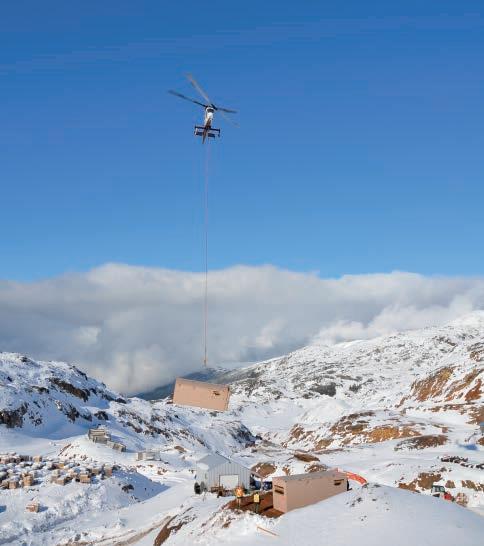
The AX-Mobile system used at Brucejack involved two 21’x8’x10’ tanks, one of which served as a primary tank while the other acted as the textile media filter unit. The tanks were driven to the staging point on flatbed trucks. From there they were flown, one at a time, by heavy-lift helicopter over the mountain range to Brucejack where they were lowered onto a small knoll the miners had leveled (Figure 1). By air, the trip took approximately 12 minutes each way. Weighing in at approximately 6,000 pounds with a helicopter carrying capacity of only 5,500 pounds, the treatment unit had to be manually stripped of 500 pounds on-site before takeoff. A third and final trip was made with a cargo net carrying the
textile and other material that had been temporarily removed. The AX-Mobile is also available in a variety of sizes up to 42’, but Lilles opted for two 21’ units for the trek.
AX-Mobile units are designed to operate above-ground, even in freezing temperatures, which made installation for the Brucejack site much simpler than repositioning an outhouse every few weeks. The miners had dug a 6’ hole for a wet well next to the AX-Mobile units, into which they buried a 24”-dia PVC lift station (Figure 2, page 22). The AX-Mobile units arrived pre-plumbed, so Lilles had only to connect the components to each other and
(Continued on page 22...)
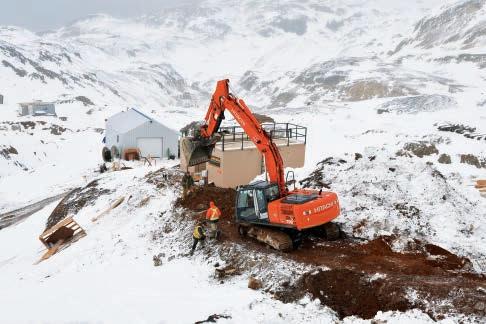
(...Continued from page 21)
the wet well upon arrival and then test the system (Figure 3). The entire installation was completed in a single day.
During operation, wastewater in the AX-Mobile flows first to the wet well, from which 50-gallon doses are pumped into the 7,500-gallon unit serving as the primary treatment (septic) tank. From there, the wastewater passes through an initial effluent filter and then flows into the three-compartment AX-Mobile unit serving as the treatment system.
The first compartment of the treatment system is the 3,000-gallon recirculationblending chamber. Here, the wastewater mixes with secondary-treated effluent from the textile media hanging above it. Then it is drawn into the recirculationpump chamber, from which 100 gallons per hour are pumped up to the hanging textile media per hour. Spin nozzles distribute the wastewater across the hanging textile filters for secondary treatment. As the wastewater percolates through the textile filters, microorganisms remove nutrients and impurities.
After the wastewater travels down through the media filters, some of it is sent to the 1,500-gallon recirculation-filtrate chamber for eventual dispersal, while the rest of it is redirected back into the recirculationblending chamber where it begins the process again. Wastewater typically remains in the system for up to 2.5 days before dispersal.
Before final discharge, the wastewater passes through a UV disinfection unit at the rear of the vessel. The result is effluent suitable for subsurface irrigation or surface discharge after disinfection (where regulations permit).
The AX-Mobile units have 4-inch-thick insulated fiberglass walls, and all pipes are insulated to maintain normal operating temperatures of 60 degrees Fahrenheit even in the coldest points of winter. Hot water from showers, laundry, and the kitchen facilities is typically enough to keep the system operating in this temperature
range, but a heating unit can be added should the system fall below 40 degrees Fahrenheit. AX-Mobile systems have also been installed in tropical climates where temperatures regularly exceed 90 degrees Fahrenheit, but heat actually enhances the function of the microorganisms.
Orenco engineer Ted E. Kulongoski performed training on the system on the day of installation. A prewired control panel and touch screen installed in a cabinet at the back of the treatment unit allow operators from the mining camp to check the system at a glance (Figure 4). The system is also monitored remotely by Wildernest Systems. Maintenance such as cleaning of the filters and spin nozzles can be performed by climbing the catwalk and opening the lids on the top of the units. The filters are cleaned simply by spraying them with clean water.
Since the original installation, Eerik Lilles has installed a second two-unit AX-Mobile Treatment System at Brucejack for Pretium.
In 2011, the family of AdvanTex Wastewater Treatment Systems was awarded with the Water Environment Federation’s Innovative Technology Award thanks to their superior nutrient-reduction capabilities. AdvanTex has demonstrated an ability to meet the strictest wastewater regulations in Canada, the U.S., and internationally since debuting in 2000.
AX-Mobile was designed specifically to meet the demands of temporary and/or
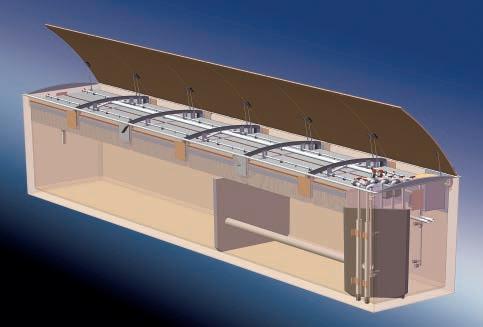

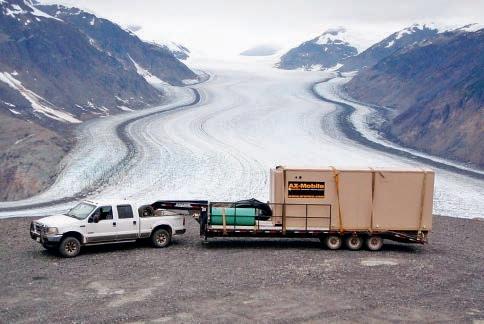
meet the demands of temporary and/or remote applications. The units are available in 14 ft-42 ft lengths and can be installed individually or in multi-unit arrays serving anywhere from 3 to 3,000 people or more. They can be installed above ground in remote locations even under the most extreme conditions, and then relocated, if desired. The systems are intentionally simple so that they can be installed quickly, occupy a small footprint, and be moved almost anywhere.
Not far from Brucejack in Northern British Columbia, a mining camp owned by Castle Resources was experiencing similar challenges thanks to its remote and barren
location. Lilles and Wildernest Systems were also contracted to consult on this site and, again, Lilles advised the installation of an AX-Mobile treatment system. For this installation, one unit had to be transferred by three different carriers when the 50-person Granduc mining camp became unreachable after severe flooding washed out the camp’s only access road. The 21’ Mobile unit was driven by truck to the nearest available site where it was then loaded onto a barge and shipped to a drop-off point. Then, another truck hauled it the rest of the way to the camp and an excavator lowered it into place (Figure 5).
The unit at Granduc featured a packedbed filter module treating flows up to
2,500 gpd and simplified excavation, piping, installation, and start-up. This treatment process took place through a 3,000-gallon primary tank, 2,000-gallon recirculation chamber, and 1,000-gallon filtrate chamber, followed by UV disinfection and then discharged to overland flow.
In addition to mining camps, AX-Mobile treatment systems can be used for marine facilities, military installations, emergency sanitation and disaster relief organizations, and humanitarian aid organizations. Though they are most often used for primary and secondary wastewater treatment, they are also capable of temporary flow diversions, off-line situations, and accommodating seasonal wastewater flow increases.




3300, 205 - 5th Ave SW Calgary, AB T2P 2V7
Tel403 726 0666 Fax403 264 1262 Cell403 819 2516
farhat@sableconsultants.com SABLECONSULTANTS.COM
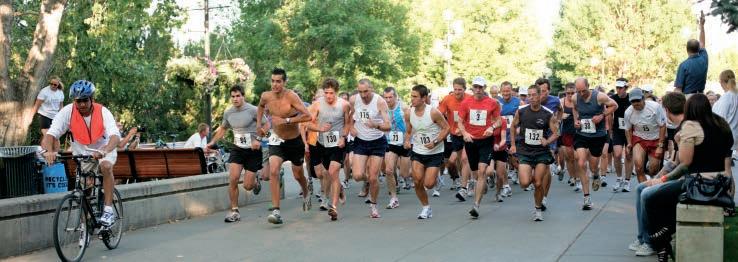
On your mark! Get ready, the CSPG, CSEG, and CAPL will be running our annual Roadrace and Fun Run this September. Expanding on last year’s format, the event promises to be better than ever!
Again, we are offering both a 10km and a 5km race. We have secured Winning Time to provide chip timing and Events-on-Line will provide easy on-line registration.
The run will take place on Wednesday, September 12, 2012. Start time 6:00pm just north of the Eau Claire YMCA. The route will take you on an out-and-back course along the beautiful Bow River pathway, finishing at the Eau Claire YMCA. Following the race, all racers, volunteers, and guests are invited to gather at the Calgary Curling Club, just north of Prince's Island for awards, draw prizes, refreshments, and some friendly camaraderie. So if you are looking for a competitive race or just want to have fun, come join us!
The race is open to all members of the CSPG, CSEG, and CAPL, and the general public, however, space is limited to 200 participants. So register early to avoid disappointment! There will be NO race day registration. For more information or to register, visit our website www.cspg.org\events. For sponsorship opportunities please contact: Dan Cicero 403-531-7711 dcicero@huntoil.com, or Shirley Fleming 403-269-440, Shirley. Fleming@perpetualenergyinc.com.
To help you, Gord Hobbins of Gord’s Running Store has developed a 10km race training guide for novice runners. Try it out and benefit from some expert advice,
you may be surprised how easy it can be to gently get yourself in condition for your first race.
GORD’S 12-WEEK TRAINING GUIDE FOR NOVICE RUNNERS
Guidance/Tips: For novice runners who wish a do-it-yourself program at your leisure.
-Run for short durations between 3 and 5 times per week according to schedule, with your long run days being the key to your training program.
-If your running shoes are giving you some problems, get some that fit and match your gait.
-Guide allows for a gradual increase to a comfortable load; your legs may need some conditioning at first.
-Yes, times are in minutes. The secret is to be regular and not beat yourself up.
-Wear a hat and cool shades. Keep well hydrated. It really helps.
-Gently stretch those calves and quads afterwards.
-Take along a friend and convince them to sign up for CSPG, CSEG, and the RoadRace as well.
Many thanks go out to our sponsors and volunteers who make this event possible each year!
We hope to see you there! Mike Cardell, Race Director.
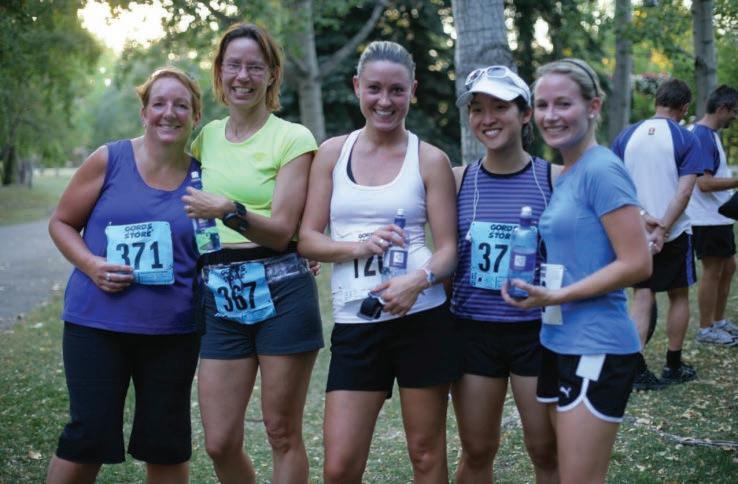
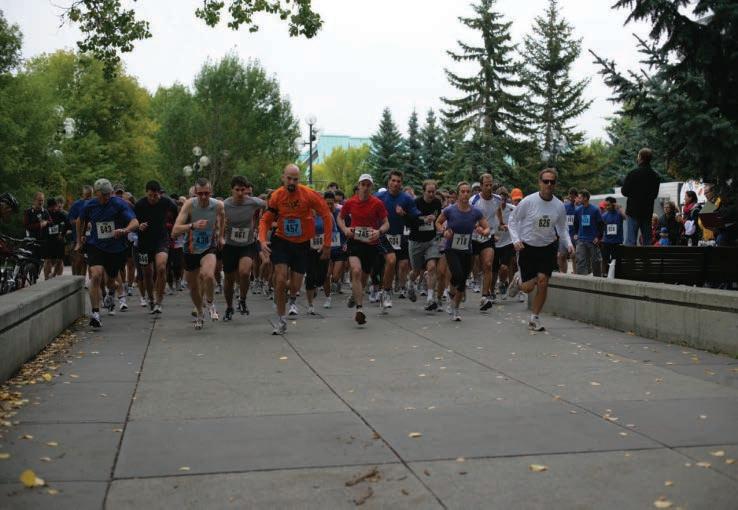
A new series – notes on regulatory issues for industry geologists from regulatory colleagues at the Energy Resources Conservation Board (ERCB).
Over the next year, ERCB staff will be writing this new Reservoir column on regulatory issues and providing updates on activities we think will be of practical interest to CSPG members. This article is an introduction to the column and outlines what we hope to accomplish over the next 12 months.
The oil and gas industry is continuously evolving, and other government agencies as well as the ERCB are making changes that will affect the energy industry. We at the ERCB keep abreast of the developments, assess what they might mean in the immediate future and over the longer-term, and then determine what they might mean to us as regulators and how we might need to respond to them.
Equally important to us is understanding how our response to sector developments might affect you as industry geoscientists, how you do your jobs, and what you need to know about our role as regulators.
Over the next 12 months we will be writing about a variety of issues, including:
• the ERCB’s application process and what you can do to help get your companies’ energy projects approved in a timely fashion;
• the creation of a new regulatory framework for the development of unconventional resources;
• a couple of aspects of the ERCB’s approach: approvals for projects and/ or pads rather than for individual wells; and community involvement and public engagement, especially explaining to residents the relevant geology and overall development plans;
• some in situ oil sands issues, such as caprock integrity and a new project approval process.
All the while we will try to keep in mind what it is you as the geologists on the projects can do to make the processes more efficient for your company. We are trying to make our
processes more efficient, and there are some things we can help you do.
As the regulators, we must consider the possible harm that could occur and find ways to mitigate the risk of that harm actually occurring. We need to be comfortable, on behalf of the public, that the residual risks are acceptable. Although the public might like us to, it is impossible to absolutely remove all risks short of banning all activity. That is not practical.
In fact, our mission is to ensure that the discovery, development, and delivery of Alberta’s energy resources take place in a manner that is fair, responsible, and in the public interest.
Over the next 12 months we hope to show you, industry’s practising geologists, how we go about doing that—and provide you with some insights to make the roles of industry geologists and the ERCB more satisfying.
Alex Bolton, P.Geo. George Eynon, P.Geo. Board Members – Energy Resources Conservation Board
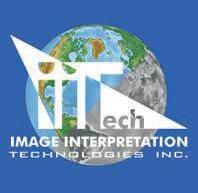


JeffRowe +16135207713(office) +16132180213(cell) jrowe@fugro.com www.fugro-gravmag.com
ZeevBerger +14032161845(office) zeev@iitech.ca www.iitech.ca
Non-exclusivedataavailable at:www.fugro-gravmag.com
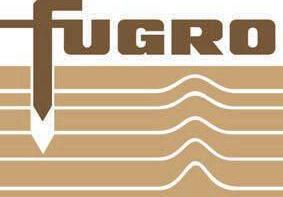
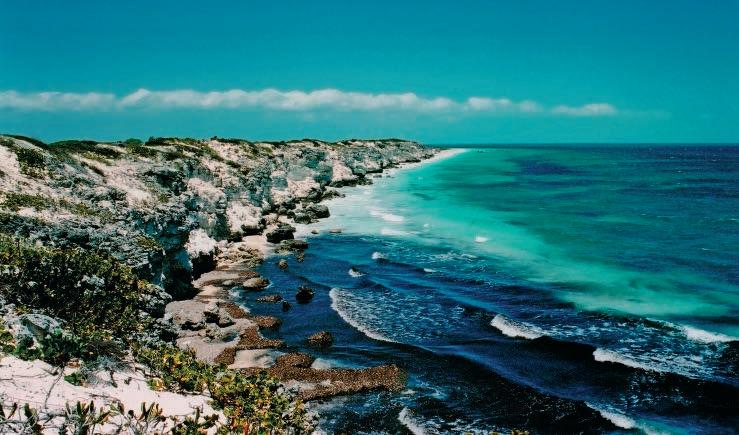
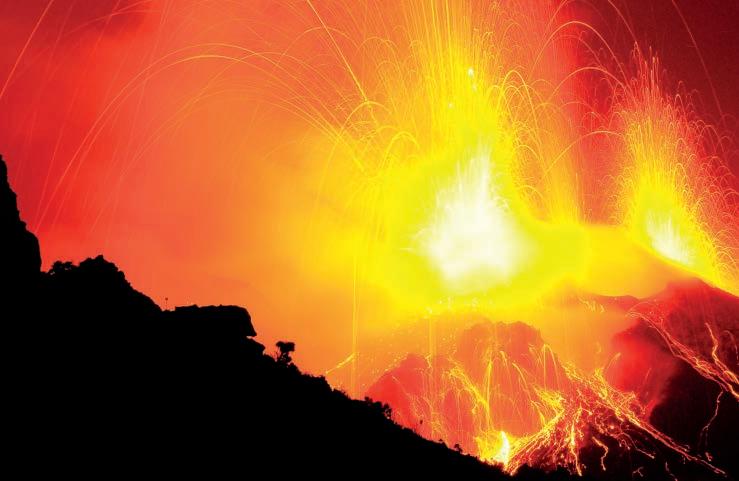
$ 200 for Best Photo
$ 200 for Best Sedimentary Structure Photo
Deadline: July 20, 2012
Any landscape-oriented photo of geological interest, Canadian or international content.
Please include a brief description and location.
Maximum of 3 entries per person.

Digital photos only
(TIFF or high quality JPEG with minimum resolution of 3MP)
To submit photos, please send to markus.ebner@bonavistaenergy.com, caitlin.young@cspg.org


| By Garrett Quinn and Mark Rabin
Graduate students and senior undergraduates from Queen’s University, Carleton University, the University of Ottawa, Western University, and the University of Toronto convened at the 11th annual Advances in Earth Sciences Research Conference (AESRC) from March 23rd – 25th. This year AESRC was held in historic Miller Hall at Queen’s University in Kingston, Ontario, against the stunning backdrop of its rock, mineral, and paleontology museum (the Miller Museum of Geology).
Members of the University Outreach Committee attended the conference, beginning with poster presentations on Friday night. Saturday morning Dr. Raymond Price, Professor Emeritus at Queens, delivered the keynote address entitled The Cordilleran foreland thrust-and-fold belt in southern Canada: Plate Tectonics, Mantle Flow, Gravitational Spreading, and Tectonic Heredity. For the visitors from Calgary this was a highlight of the weekend. After sharing some of his encyclopaedic knowledge of the Canadian Rockies with the audience, Dr. Price reflected back to his days as an undergrad student on a field mapping party in the Rockies back in the 1950s. He smiled as he recalled the inadequate answers of his then superiors when asked how the mountains formed; and joked, “…so I spent the next 60 years of my life trying to figure out how the mountains formed.”
Dr. Price’s lecture was a fitting starting point to a weekend that featured fascinating talks from some of Ontario’s brightest young geologists who are just starting to contribute to the science that Dr. Price’s generation brought forward into a plate tectonics framework. The technical talks were split into four sessions: Tectonics and Economic Geology; Sedimentology and Paleontology; Geotechnical, Geomechanical Engineering, and Geophysics; and Geochemistry, Hydrogeology, and Environmental Geology.
The CSPG sponsored the Sedimentology and Paleontology session. Talks in this session included a look into the variability of Nisku reefs and the effects of nutrients, insights into the oldest complex life of the Ediacaran assemblage in Newfoundland, and a petrographic investigation of carbonate cements and textures of the P-T boundary in thin-section that appears to be evidence of global ocean acidification at the time of
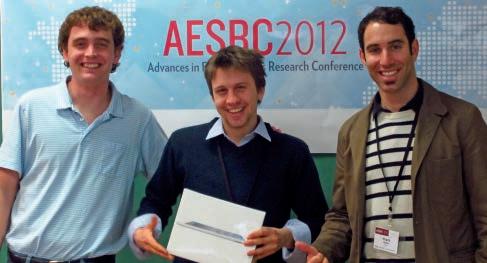
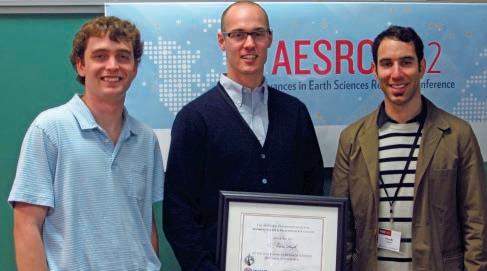
“the great dying.” Recent Queens graduate and CSPG University Outreach volunteer Garrett Quinn also spoke about SAGD well placement in the Clearwater Formation. Students seemed impressed with the vast datasets, 3D modelling capability, and the economic implication of applied geoscience in Canada’s in-situ oil sands industry.
Sponsorship of the Sedimentology and Paleontology session included offering a prize for the best talk from this session. Winner Adam Pugh from Carleton received an ammonite and a cash prize for his talk: Insights into the depositional history of the Boreal Sea. Adam presented a piece from his M.Sc. research on the Cretaceous rocks of the Sverdrup Basin in Canada’s Arctic Archipelago. The detailed biostratigraphy and sedimentology of the shale section presented
help to unravel the complex stratigraphy of the basin. The high TOC of the strata make them potential source rocks – perhaps an unconventional play of the future.
The CSPG had a booth set up during the conference. University Outreach volunteers helped 40 new student members sign up for membership in the Society. These students were entered into a draw to win an iPad 2. Queen’s M.Sc. candidate Carl Nagy’s was the winner (Carl also won the Best Talk award in the tectonics session for his talk on the Himalayan Mountains).
An honourable mention goes out to the AESRC organizing committee, speakers, and poster presenters for hosting a fun, informative, and highly enjoyable weekend.

CORPORATE MEMBERS
ALLEN GEOPHYSICAL CONSULTING LTD.
APACHE CANADA LTD.
APEGA
BAKER ATLAS
BDO CANADA LLP
BLACK SWAN ENERGY
BLUEBACK RESERVOIR
CANADIAN NATURAL RESOURCES LTD.
CASEY & ASSOCIATES
CENOVUS
CSEG FOUNDATION
CONOCOPHILLIPS CANADA LIMITED
DEVON CANADA CORPORATION
ENCANA
ENERPLUS CORPORATION
EXXON MOBIL UPSTREAM RESEARCH COMPANY
GEOLOGIC SYSTEMS LTD.
GEOSTRATA RESOURCES INC.
GEOVARIANCES
HALLIBURTON
HUNT OIL COMPANY OF CANADA
HUSKY ENERGY INC.
IHS
IMPERIAL OIL RESOURCES
JEWELSUITE
LITTLE ROCK DOCUMENT SYSTEMS
LORING TARCORE LABS
MJ SYSTEMS
MURPHY OIL COMPANY
NEXEN INC.
PARADIGM
PENN WEST PETROLEUM LTD.
PETROCRAFT PRODUCTS LTD.
PLUSPETROL S.A.
ROKE TECHNOLOGIES
ROXAR
RPS ENERGY CANADA LTD.
SCHLUMBERGER
SHELL CANADA LIMITED
SIGMA EXPLORATIONS INC.
SPROULE ASSOCIATES LIMITED
STATOIL
SUNCOR ENERGY INC.
TALISMAN ENERGY INC.
TOTAL E&P CANADA LTD.
TOURMALINE OIL CORP.
UNITED OIL AND GAS CONSULTING
WEATHERFORD LABORATORIES
AS OF APRIL 10, 2012
CSPG welcomes our 2012 Corporate Members! The benefits of being a corporate member include:
• Recognition in the monthly Reservoir and quarterly Bulletin
• One associate membership
• Reserved tables at the technical luncheons with your company logo
• One free pass to the CSPG Core Conference …and more! Contact Kasandra Klein at kasandra.klein@ cspg.org to be a corporate member today!
In accordance with Article VI, subparagraph (a) of the By-Laws 2003, the Nominating Committee hereby calls for Nominations to Stand for Election to the 2013 Executive Committee of the Canadian Society of Petroleum Geologists.
Nominations can be made in two ways:
1) Formal Nominations are to be made in writing, signed by at least twenty-five members in good standing and endorsed by the nominee who is consenting to stand for office. Qualified candidates will be published on the CSPG website and the election will take place on January 10th, 2013 at the AGM.
2) Nominations can be made via email or letter; please confirm that the
nominee is willing to stand for the office of choice and send to CSPG Office to the attention of the Past President. Candidates nominated in this fashion will be considered by the Nominations Committee.
The Canadian Society of Petroleum Geologists asks for your assistance in filling the following positions: Vice President, Communications Director, Assistant Director of Finance, Assistant Services Director, Assistant Program Director, and Assistant Outreach Director.
Interested parties should contact the office for details and general requirements of service on the Executive. Call for Nominations closes September 15th, 2012




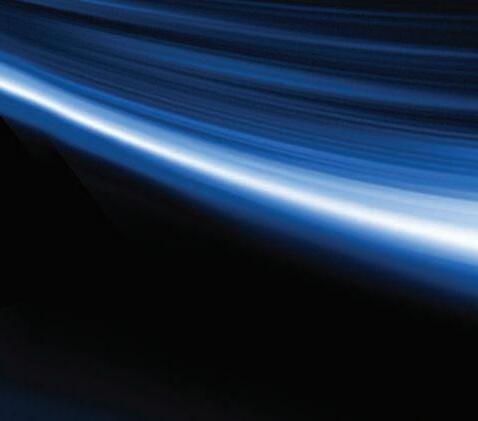
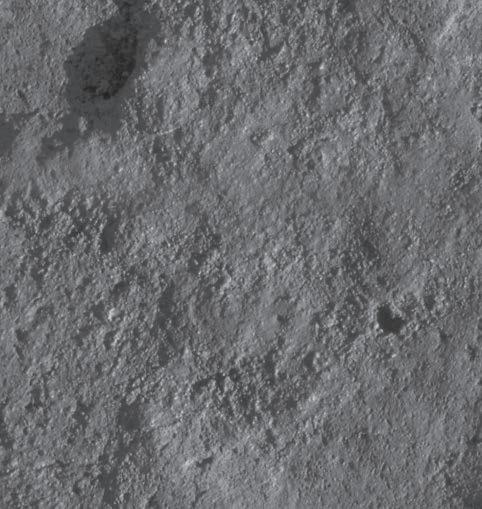
As you know, we are now The Association of Professional Engineers and Geoscientists of Alberta (APEGA), and with the new name comes the title Professional Geoscientist (P.Geo.).
It’s an exciting time and we want all geoscience members of APEGA to show their professional pride. Simply scan the QR code or call us at 1-800-661-7020 and we’ll send you a P.Geo. decal that you can put on your vehicle bumper, hard hat, laptop or anywhere else that lets others know that you’re a Professional Geoscientist and proud of it.


Want to deliver well plans in minutes instead of months?





Introducing DecisionSpace® Well Planning for the DecisionSpace Desktop Application
This new software gives drilling engineers and geoscientists tools to generate drilling targets, define well paths and rapidly iterate through field development scenarios within a subsurface interpretation environment. Simultaneously plan the right number of platforms and multilateral wells for deepwater success. Or optimize horizontal drilling to maximize drainage in shale plays. Update your program with real-time data to maximize reservoir potential. Help ensure safety through integration with our industry-leading, anti-collision COMPASS® software technology. Get better answers faster. Visit halliburton.com/decisionspacedesktop High Science Simplified®
